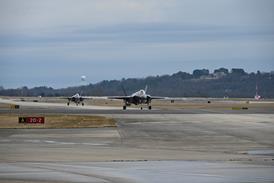The recent introduction of reduced vertical separation minima (RVSM) in Brazil has brought a 4:1 benefit-to-cost ratio for operators that invested in upgrading their aircraft to RVSM standards, according to initial assessments by the Brazilian airspace control department DECEA, writes Jackson Flores.
RVSM was introduced on 20 January simultaneously throughout the Americas, and Saulo Jos‚ da Silva, head of the DECEA's air traffic management division, says the process "was absolutely seamless" and has operated without any hitches since then.
Da Silva says that Brazil, unlike North America and Europe where the traffic is denser, has adopted a flexible approach to non-RVSM-equipped aircraft, allowing them access outside peak-traffic periods to RVSM airspace within the country. Despite this limited concession, da Silva maintains that air traffic management efficiency gains and quicker access to ideal flight levels have reduced costs for airlines and business jets. Meanwhile, DECEA has set June 2007 as the ultimate deadline for RVSM conversion - and that could be brought forward should traffic levels warrant it. Beyond the deadline, RVSM airspace would be closed to non-compliant aircraft.
RVSM creates six new flight levels between FL290 (29,000ft/8,850m) and FL410 by reducing the permitted minimum vertical clearance between aircraft cruising levels from 2,000ft to 1,000ft.
DECEA had predicted that about 80% of the expected traffic between FL290 and FL410 would be RVSM-compliant, but Da Silva says: "We were pleasantly surprised to see that somewhat more than 90% of the traffic [handled] over the days following RVSM implementation was performed by aircraft with the required equipment."
Source: Flight International























